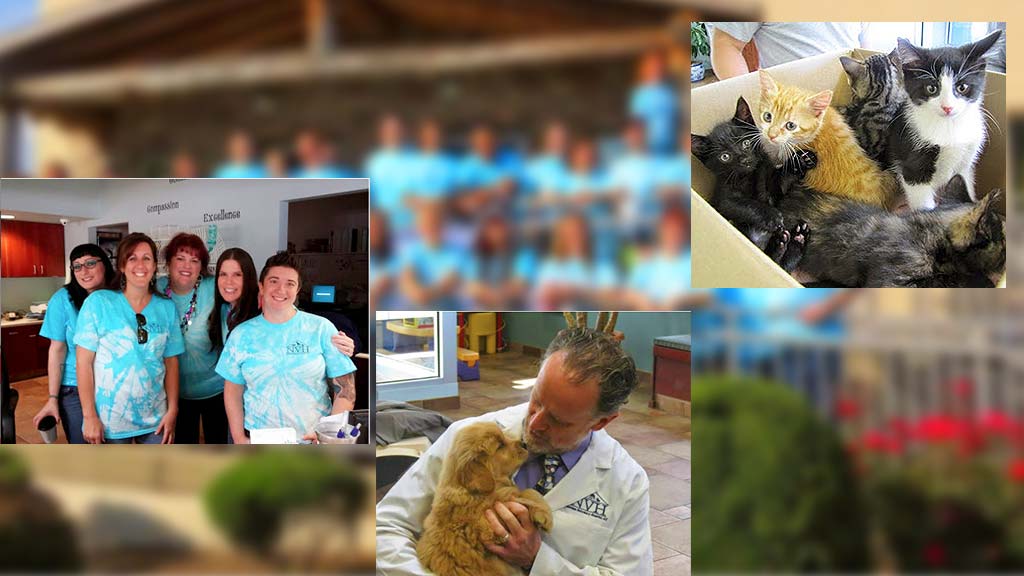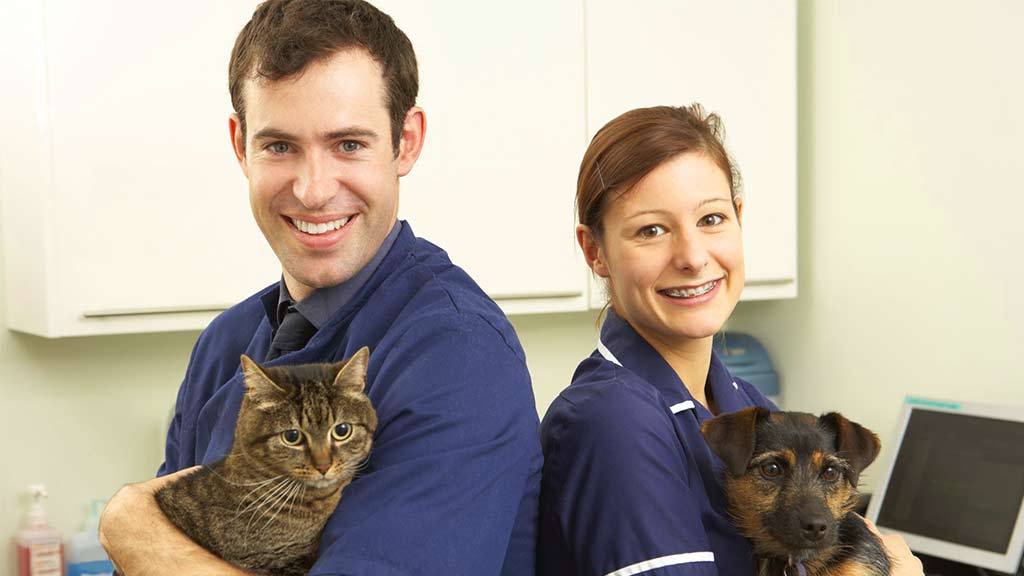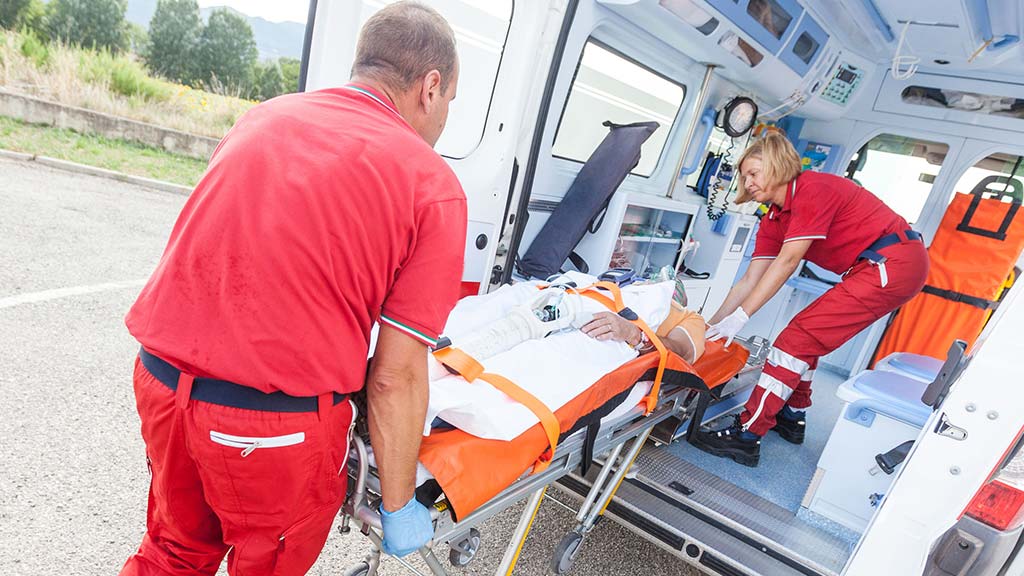Introduction
U.S.2020 Veterinary Operations Report
Opportunities and Threats to Veterinary Practices 2020-21
Threats
Civil Unrest and Cutbacks in Local Services
Burnout And Inability To Get In Front Of Current Issues
Opportunities
Increased Availability of Labor
Advantages of Social Distancing
Consumers Embrace Electronic Communication
More Health Conscious Pet Owners
More Community Conscious Pet Owners
Telemedicine Is Now Commonplace
Recommended Operational Changes for Veterinary Practices 2020-21
Recession-related Money Concerns
Installment and Traditional Credit Solutions
Streamline and Improve the Hiring Process
Improve Efficiency and Move Work Inside
Traditional Veterinary Workflow
Recommended Changes To Workflow
Installation of Clear Barriers
Lean Heavier On Digital Communication
Increase Use of Text Messaging
Allow Clients To Schedule Their Own Appointments
Electronic Forms To Acquire Patient Histories
Make More Use Of Your Website And Make Sure It Is Appealing
Train Your Team To Individualize Care
Conclusion
Resources
Works Cited
Addendum 1: Labor Law Q&A
Addendum 2: Infectious Disease Q&A
Addendum 3: OSHA Q&A
Addendum 4: Management Q&A
Introduction
In May of 2020, Virox Animal Health provided a platform for veterinary management leaders Dr. Steve Noonan, Dr. Sarah Wooten, Dr. Dave Nichol, Dr. Phil Zeltsman, Eric Garcia, Denise Tumblin and me to offer solutions to the COVID-related challenges of economic recession, restricted business operations, and HR issues. Now that we are about to enter the fall, it’s time to reassess our position and plan our next steps forward.
For my part, I want you to encourage you to be optimistic. Though the next few months may be difficult, we have at hand the opportunity, talent, and technology to sustain us into 2021 as well as to keep us competitive and productive for many additional years. Changes in the way we work and an increase in the available labor pool mean that we can finally put an end to chronic issues like staff shortages, excessive workload, and burnout. And, as the upcoming review of veterinary productivity will show, Americans remain eager to own and care for dogs and cats, veterinary healthcare is a valued service to them, and consumers in general are all too happy to buy and support local business like ours.
We need not move forward in spite of this pandemic. If we embrace a number of opportunities at hand, we can not only devise business solutions that will work in the short term, but that will work for many years to come. These solutions will improve the client and patient service experience, keep our team members engaged in meaningful work, and increase our profitability.
Bash Halow, CVPM, LVT
Halow Consulting
Contributors
On October 22nd, Virox Animal Health invited Kim Rovtar, Nicole Kenny, Isabel DeOliveira and Bash Halow to join an audience of more than 1000 veterinary professionals to discuss safety, employment law, practice management, and infectious disease with respects to coronavirus. Bash Halow wrote recommendations for veterinary operations for 2020-21 and the panel participated in a live Q&A as well as writing one for this report.
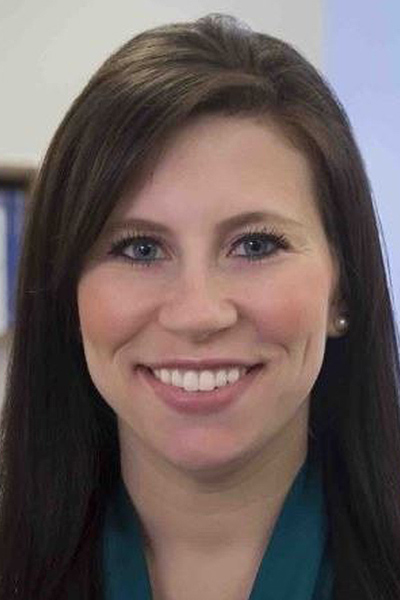


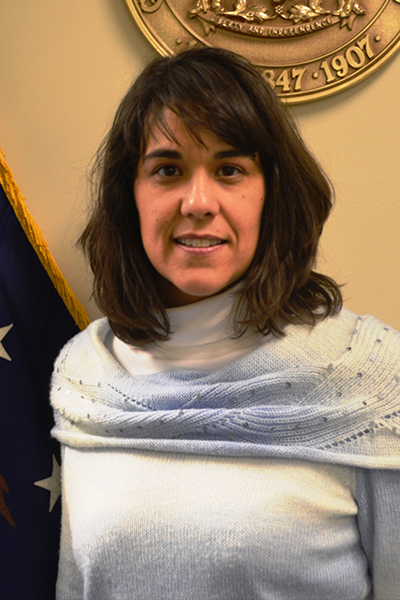
U.S. Veterinary Operations Report
Revenue YOY Is Up
Data collected and normalized from approximately 1000 U.S. veterinary practices by VitusVet showed that veterinary revenue increased 9% year-over-year (YOY) from January 2020 to the time of the nationwide shutdown. Revenue fell by 19% YOY during the 6 toughest weeks of the shutdown, but from May through the end of September was up by 9% YOY. Overall revenue was up by 8% from January- September YOY. This information is in line with data shared anecdotally from colleagues close to corporate practices and management groups.
Invoices YOY Is Up
In the same VitusVet data, the number of invoices also increased 26% YOY upending a long-standing downward trend. However, average client transaction (ACT) also reversed course from its typical YOY climb. It was down by 20%.
New Clients and New Patients YOY Are Up
New pets were up by 0.5% and new clients were up by 1% YOY, but from May through September YOY, new clients were up by 16% and new pets up by 12.4% evincing news stories of record-high, shelter adoption rates (Oakes 2020).
Most Practices Continue To Offer Curbside Care
Live poll data that I collected from approximately 600 veterinary professionals during various virtual education events in 2020 showed that at least 80% of attendees in any given poll were offering some kind of curbside care. About 30% in any given poll were offering a hybridized form of curbside care where clients were allowed into the building for certain veterinary services like emergencies or euthanasia. As the summer wore on, there was an increase in the number of respondents that said they had moved care inside, but through the top of October, at least 60% in any poll said that they wanted to move care back inside, but didn’t have a plan for how to do it or a date to start the transition.
Curbside Care Has A Negative Impact On Team Members
When asked if curbside care was having a ‘significant negative impact’ on the staff, at least 40% in any poll ‘strongly agreed’, with another 30-40% saying that they ‘agreed’. For my part, I do not recall a time when practice teams have complained more bitterly about the impact that patient care and client service is having on their teams. Complaints focus on the difficulty of the work physically, on the stress of worrying about infection with corona virus, and on the volume of business. Practice teams also report that clients seem to be less patient and less civil than they were before.
Reports of Staff Shortages Are Widespread
Polling and discussion with audience members over the past few months indicates that veterinarian and credentialed veterinary technician shortages persist in many areas. Veterinary professionals acknowledge that this shortage is leaving many practice teams overworked and demoralized. For some practice owners, chronic staff shortages are the deciding factor in the choice to sell their practices.
Productivity At Record Highs
Anecdotally, veterinary colleagues of mine working with management groups and corporate practices have reported that some sites are seeing record productivity and that revenue-per-staff-hour ratios are at all time highs. It is not clear if this increase in productivity is due to any intentional management strategy or if it is because of staff shortages during a very busy Q2.
Consolidation Trend Continues
In the May report, I forecasted a continued interest in private practice acquisition and consolidation which has proved true. On the corporate side of things, Covetrus, itself a product of the merger between Henry Schein and VetsFirstChoice, acquired majority ownership of the Veterinary Management Study Groups (Wogan 2020).
Opportunities and Threats to Veterinary Practices in 2020-2021
Threats
The recession was well covered in the previous paper and, for the most part, has ultimately unfolded as forecast. Ongoing economic signs are mixed. Information sourced from Kiplinger, the International Monetary Fund, the Brookings Institute, the Bureau of Economic Analysis and the Financial Times suggest that the depth and length of the recession in the U.S. will be dependent on the following factors:
Availability of Additional Federal COVID-19 Relief
There is merit to the narrative that unemployment was more lucrative than employment in the period just following the shut down. According to the Bureau of Economic Analysis, household income rose by 12.2% in April 2020 over March 2020 (Bureau of Economic Activity 2020). At of the end of Q2, Kiplinger reported that consumer disposable income had risen by 9.6% (Payne 2020). According to the New York Times, unemployed workers receiving Unemployment Insurance had “twice as much money in their checking accounts as they did in January” (Bui 2020). In the absence of ongoing federal assistance, personal income fell by 2.7% in August 2020 compared to July 2020 (Bureau of Economic Activity 2020).
This data suggests that while veterinary practice growth in Q2 may have been tied to an increase in pet ownership, it may also have been linked to the availability of additional money to unemployed or underemployed workers through the CARES Act. Growth in Q4 2020 and 2021 may be tied to the continuation and extent of additional federal stimulus.
The Extent To Which Recession is Systemic
In her October 6th address to the London School of Economics, International Monetary Fund (IMF) Director, Kristalina Georgieva, acknowledged that the aftermath of the shutdown in advanced economies like the U.S and in Europe had not been as bad as the IMF had predicted, but she underlined that, “calamity is far from over”. Said Georgieva:
“The global economy is coming back from the depths of the crisis, but this calamity is far from over. All countries are facing, what I would call, the long ascent, a difficult climb that will be uneven, uncertain and prone to setbacks. We are all joined by a single rope and we are only as strong as the weakest climbers. They [workers, businesses, and economically weak countries] will need help on the way up.” (Georgieva 2020)
The Ability of World Governments to Coordinate Relief Efforts
In an article in the Financial Times, Mariana Mazzucato, professor of the Institute for Innovation and Public Purpose cautions that world governments need to coordinate relief efforts if a deeper recession is to be avoided. Says Mazzucato, “Given the global nature of the economy, without a truly global recovery plan, demand will stagnate.”
In the same article, Robert Zoellick, former World Bank President, identifies the U.S. as the “innovator and guarantor of the late 20th Century order”, but believes that we have been as of late “recklessly deconstructing our own frame work”. It is this fragmentation, as he calls it, that he believes risks the prospects of a fast return to economic prosperity.
Other commentators in the article cite the value of a vaccine in getting the world economy back on its feet, but worry that equal access to it will hinder a recovery (Financial Times 2020). As Kristalina Georgieva said in her London School of Economics address, “Not until the virus is stopped everywhere, can there be a recovery anywhere.” (Georgieva 2020)
Where You Are Located Regionally
In March of 2020, The Brookings Institute made the case that the shutdown would unevenly affect parts of the U.S. based on which industries were most directly affected by closures and where they were located regionally (Mark Muro 2020).
When forecasting your future revenue, consider whether your veterinary practice is located in an area where a large number of businesses are directly impacted by ongoing closures and whether or not the employees of those businesses will receive ongoing stimulus money.
Civil Unrest and Cutbacks In Local Services
At the start of Q3, Verisk Maplecroft, a risk analysis and strategic forecasting advisory firm, downgraded the U.S. Civil Unrest Index from Medium to High Risk. In the report, the firm said, “We forecast a 65.2% probability of unrest in the US worsening by 2020-Q4. Our latest projection maintains this trajectory, with a 64.9% likelihood that the US unrest score will continue to worsen by 2021-Q1” (Jimena Blanco 2020).
The shutdown has had a widespread impact on U.S. states and cities. According to Forbes, 34 U.S. states will see budget gaps in the new fiscal year of 10% or more even after using all reserve funds. State general revenues will suffer an annual fall between 14.8% and 19.5% (McGahey 2020).
In a statement on President Trump’s decision to halt negotiations on a COVID relief bill, the United States Conference of Mayors said this:
“Today’s failure to deliver badly needed fiscal assistance to cities of all shapes and sizes is going to amount to increased job losses, decreased public safety and a greatly impaired economic recovery. The victims of today’s failure will be the American people – residents in cities across the country – led by Republicans, Independents and Democrats – who will see critical services further reduced or eliminated entirely. It will be impossible to make up for the time that will be lost” (United States Conference of Mayors 2020).
Unrest and a cut in city services will curtail our ability to put the pandemic behind us and erode the morale of clients and employees.
Chronic Staff Shortages
As stated earlier, many practices report critically high levels of stress, staff shortages, and work overload. Solutions exist for these practices, but team members may be too consumed with day-to-day operations to take on any of the additional efforts needed to get ahead.
Practices are at risk of falling into a positive feedback loop where they lose critical team members, don’t have time to properly hire or train new ones, and then sink even deeper into overwork, failure and decreased productivity.
Viral Resurgence
As of October 2020, our worst fears of fall resurgence appear to be coming true (Corona Virus Resource Center 2020). On October 18th, 2020, the New York Times reported a nationwide increase in total U.S. cases of 28% (New York Times 2020). In response, some U.S. cities are stepping up restrictions on indoor dining, meetings, and travel. Schools are also at risk of closure.
Additional local, regional or even national shutdowns could impact staffing, business hours, and revenue and could likely have a consequential impact on the economy at large.
Cold Winter Months Ahead
Up to this point, our team members have been willing to return to work, show their support for our business and patients, and extend themselves by serving our clients outside, but it’s come with a toll on their physical and mental health. Data collected from conference attendees showed that in any given group, 60% of veterinary hospitals had no plan in place to bring care inside, yet continuing curbside care in the upcoming cold months comes with its own set of risks. It would be best to bring care inside, but many team members are afraid of infection by COVID and refuse to engage even in a discussion of how their practice could revert to a safe version of inside care.
Opportunities
Bigger Labor Pool
As of September 2020, the Bureau of Labor Statistics reported that unemployment in the U.S. was at 7.9 percent, a little more than double what it was prior to the shutdown in March (Bureau of Labor Statistics 2020) and evidence suggests that even if Congress appropriates more relief, workers will still search for work (Jason Faberman 2020).
As author Claudio Fernandez-Araoz said in a Harvard Business Review, “The pool of available talent is suddenly both changing and expanding, and visionary leaders can make the most of it, preparing the ground for post-crisis recovery and growth.” Jim Collins, a management consultant, builds on the sentiment saying, “Making the leap from good to great starts with getting the right people on the bus and the time to hire is now.” (Fernandez-Araoz 2020)
Social Distancing and Restrictions On Business Occupancy
Though municipalities have restricted the number of people that can be inside a business, for many entrepreneurs the restrictions have served as inspiration. These men and women were able to reevaluate and redesign the way they delivered their services or goods and in the doing became more profitable, efficient, and more relevant (Sentance 2020). Opining on the value of innovation during the COVID crisis, the Harvard Business Review said:
“For managers, an important reflection is to think about what needs to be delivered after the crisis. A big crisis often alters the behavior of customers, employees, and partners. Perhaps you have reason to believe the customer preferences will stay the same, but often they do not. Don’t waste those experiences by planning for how to get back to the old normal. Plan for a new normal.” (Linus Dahlander 2020)
.
Veterinary practice leaders should view social distancing restrictions as a chance to revisit workflow with the whole team, to eliminate steps that are inefficient or prone to cause errors, and to create a work environment that is safe and productive in the long term.
Consumers Embrace Text Messaging and Other Forms Of Electronic Communication
Nine out of ten consumers prefer to text with businesses. 52% prefer to resolve issues via text messages and 60% of consumers will hang up if they have to wait on hold longer than 1 minute to resolve an issue (Textedly 2020). According to VitusVet, two way texting reduces call traffic at veterinary practices by 72%. After the shutdown began, Halow Consulting measured a threefold increase in traffic to the veterinary websites it monitors.
In the last few months, Americans have had a crash course in technology. Even residents of nursing homes learned how to Zoom. Consumers are ready for us to talk to them using communication platforms and devices that will reduce our workload, save us time, and improve their experience with us. We should seize the opportunity.
More Americans Telecommute
COVID-19 has ushered in a precedent for telecommuting and American workers like it (Geller 2020). Finding a way to allow our employees to work from home or using telecommuting technology to employ licensed veterinary technicians or doctors who live outside of a commutable distance would instantly solve our staff shortage issues. Telecommuting can reduce payroll costs and increase efficiency (Caramela 2020). Increased telecommuting by the general population may also increase pet ownership trends.
Pet Owners Are More Health Conscious
Americans are more health conscious since the COVID-19 outbreak and in general are making healthier choices for themselves and their pets. Pet expenditures increased again in 2019 over 2018, continuing a steady upward trend that has been ongoing since 1996. Consumers are more likely to research their own ailments and those of their pets online (Healthinformatics 2020). This data suggests that veterinary practices have a chance to point consumers towards less invasive and more natural services and products that are outside the wheelhouse of big-box store competitors. Services like early disease wellness screens and alternatives to annual vaccines like VacciCheck in-house titer testing are likely to be embraced by the modern pet owner.
Americans Are More Community Conscious
Consumers recognize that small businesses like ours need their patronage and support. According to an August 2020 article by Salesforce, 56% of all consumers and 62% of Millenials say they spend more time at small businesses than they did last year. American consumers recognize the challenges small businesses face and want to help them (Schmidt 2020).
Telemedicine Now Is An Accepted Norm
Ray Dorsey, director of the Center for Health and Technology at the University of Rochester Medical Center said in an April 2020 edition of the Lancet, “There has been something like a ten-fold increase in virtual patient consultations in the last couple of weeks. It’s as big a transformation as any ever before in the history of U.S. health care.” (Webster 2020) In a May 2020 Harris poll conducted by Updox, 42% of 2000 people polled said that they had used telehealth services since the pandemic began. When surveyed, human patients and healthcare providers cited the following reasons why they preferred virtual care to traditional in-office visits:
-
-
- It was convenient;
- it strengthened the bond between patient and physician;
- the software made it fast and easy to book an appointment;
- the patients didn’t risk exposure to other sick people at the care facility.(Cision PRWeb 2020)
-
At least 80% of veterinary conference attendees believe that some of their clients have had a telemedicine appointment with their own doctors. The same number believe that clients think telemedicine is convenient; that telemedicine is growing on the human side; and that it won’t be long before pet owners begin to request the same service from veterinary practices.
Recommended Operational Changes For Veterinary Practices 2020-21
Based on the threats and opportunities outlined in the previous section, the following operational changes are recommended for your veterinary practice. These recommendations will solve short-term operational issues, but more importantly they will be a solution for long-standing chronic problems like staff shortages, inefficiency, and excessive workload. They can stay in place long after the pandemic to keep your employees safe and engaged in meaningful work. They will return you to a strong competitive position, reduce medical errors, improve medical outcomes, and improve your client’s service experience.
Be Ready To Respond to Client Financial Hardship Cases
Review your credit policy with your team and reinstruct everyone how to sensitively handle discussions with clients that can’t afford services. Move your new client materials online and include a section that helps pet owners understand the long-term costs of owning a pet. Include ideas on how to save money by using Christmas club or prize-linked savings accounts, available in some states, as a way to stockpile cash for a rainy day (Lemke 2020). Learn to alert pet owners of upcoming medical expenses so that they have time to prepare. “Mr. Halow, Rye will be 8 years of age next year. At that point she will have her first senior wellness profile. Here is more information on the test. It’s very important to her long term health.”
Pet Insurance
Teach your team members about the veterinary insurance plans available to pet owners in your state. Better yet, outsource this conversation to the advisors at Pawlicy. Pawlicy is a marketplace for most of the major pet insurance companies out there. Their reps can talk to your clients about their financial needs, find out the specifics of their pet’s need, and match them to the best policy. They have an excellent client satisfaction rate and their ability to get pet owners on insurance plans is 10 times better than our efforts. The company offers free lunch and learns to veterinary teams to help them understand pet insurance and how to market it better. Use the link to reach out.
Installment and Credit Options
Some businesses like VitusVet have partnered with third party companies like Splitit that allow for interest and fee-free installment payments for clients with credit cards. There are also the traditional, standby companies like CareCredit whose credit line can be used for both pet and human medical services. It’s always a good idea to visit with your CareCredit representative annually since the company is constantly improving their service and how clients can access it.
Payment Plans
Lastly, don’t issue payment plans on your own. In-house payment plans change your role from medical care provider to medical creditor and collection is time consuming, unpleasant, and erodes employee engagement. Companies like Vetbilling.com have streamlined ways to extend credit to clients. Pet owners that sign up for the plan absorb all costs associated with the service, but best of all, you and your practice team are absolved of pursuing the client for payments and don’t risk damaging the image that you have with your public.
Streamline and Improve The Hiring Process
Take advantage of higher unemployment levels; automate and improve the hiring process to better select for quality employees that match with your mission; and consider how you can employ gig economy workers and those that only want to telecommute.
Hire Quality Employees By Identifying Your Mission
Write down your business’s core objectives or reflect on the efforts of your best employees and ask yourself what distinguishes them from the rest. Use this information to design questions that you can use on the application or in the interview that will help you identify employees that are the best match for your business’s culture.
Write a Job Description
List the responsibilities of the position. Be wary of including ‘multi-tasking’ in the list. Multi-tasking is often our way of saying that we want our team members to make broken operational systems work. Also check for responsibilities that take the employee away from the core objectives. Keeping the employee’s activity centered on core objectives is the best way to keep them engaged in their work.
Ask Applicants To Go Above And Beyond In The Job Advertisement
When you write the job advertisement, ask the applicant to do something more than just attach a resume. As an example, when we look for applicants on Indeed, we ask the applicant to use the Cover Letter portion of the application to write a few sentences that explain why we should consider them for the position. The Cover Letter portion is immediately visible when you view the application and doesn’t require opening any attachments. If any of the applicants fail to do this simple task, they are immediately dismissed from consideration and sent a regret letter. If the applicant has completed the task and we like what they have written, we take the extra time to open the attached resume and review it.
We don’t spend a lot of time scrutinizing the resume. If it appears that we have an applicant worthy of further consideration, we send them an electronic survey generated from our WordPress website. The survey congratulates the applicant for making it the next level of the interview process, then asks the applicant additional questions to determine if he or she can work our hours, will enjoy the kind of tasks that come with the job, and if he or she is a match for our practice’s core objectives. The survey has been shown to be highly successful at identifying the best applicants.
The Interview
Make sure that the interview process is structured. Veterinary practices often invite the candidate in for a “working interview” when they are short staffed, so the “interview” ends up being an applicant trying to keep up with an employee whose trying to do the work of two people. It’s not fair to your existing employees and it makes your practice look disorganized.
Instead, allow various team members to spend one-on-one time with the applicant, to show them around the building, tell them about the job, and answer any questions. Cohesive, positive team dynamics are very important to the happiness and productivity of any team. When we allow our team members to participate in the hiring process, we can better select individuals that our existing employees will like, get along, and work with well (Haimann 2020).
Consider Gig Economy Employees
Asking existing team members to do side jobs like managing social media pages, writing for the website, fixing the computers, or processing accounts receivable takes them away from core responsibilities, risks disengagement, and, because they may not be trained or experienced at the task, sets them up for failure. Additionally, managers are often disappointed with the results and the timely execution of the additional responsibilities they assign, so it sours the manager-employee relationship.
Instead, consider hiring gig workers for these side jobs. Write a job description for the responsibility so that you have a clear understanding of the specifics of what you want done and the value of the job as a whole. Then you’ll be able to better determine how long it will take to the job and how much you should pay for it. The job description will also improve the training and the quality of the feedback you provide to the employee.
Improve Efficiency and Move Work Inside
Prior to the pandemic, workflow in many veterinary practices was inefficient and prone to error. I would like to review what we used to do and then make a recommendation for how you should change when you return to inside care this winter.
Traditional Veterinary Workflow
Before the pandemic, the steps of a veterinary client service experience were as follows:
-
-
- A service reminder is sent to the client electronically or my mail.
- The client responds to the reminder by phone or by email.
- The office confirms the appointment by phone or electronically.
- The client arrives to the practice and checks in at the reception desk.
- The client waits in the lobby.
- A support team member takes a history for the patient in an exam room and then conveys that information to a doctor.
- A doctor enters the exam room, askes additional questions, completes an exam, and formulates an assessment and plan for the patient.
- The patient is removed from the exam room and taken to a treatment area for diagnostic testing.
- The patient is returned to the exam room.
- The client receives discharge information from the medical team.
- The client stops at the reception desk for invoicing and to receive their pet’s medications.
- The client departs.
- The practice phones the client over the next few days to follow up with the patient.
-
This process is time consuming, requires redundant communication, and requires check systems at nearly every juncture to reduce the chance of dropped communication. It also traces a footprint in the facility that causes clients to cross paths which increases the clients and patient’s exposure to potential pathogens.
By challenging this workflow, we have the chance to improve efficiently, work successfully in spite of staff shortages, reduce risk of exposure to COVID and other annual diseases like the flu, improve the service experience, and increase compliance. It also means that we can return to working inside and avoid the additional hazards associated with curbside care in winter snow, ice, and cold.
Recommended Changes To Workflow
For my part, the safest, most efficient veterinary workflow that I have seen is where clients and patients bypass the lobby, are immediately put into exam room, and a team including a veterinarian, a technician, and an assistant start the appointment at once. The technician is on hand to write in the medical chart and the assistant restrains the pet, leaving the doctor a distraction-free chance to demonstrate great listening skills and to talk with the pet owner. Once the doctor starts the examination, she calls out her findings to the technician who records them in the medical history. At the conclusion of the examination, the doctor relays her assessment and plan for all to hear, gives the technician and assistant her orders, and is now free to leave the examination room, review the patient’s medical notes, and prepare for her next case. Any diagnostic samples are taken directly in the exam room eliminating a time consuming walk to the treatment area that many pets find stressful.
At the completion of the diagnostic sampling, the technician or the assistant reviews the medications and discharge instructions with the client. Even the invoicing can be completed in the exam room at which point the client’s next visit should also be discussed and scheduled. At the conclusion of the examination, the client leaves the building without stopping in the lobby.
This client service experience requires no redundant communication and reduces the chances of dropped communication to zero. It significantly reduces the amount of time required to complete a patient exam and improves both the patient and client’s service experience. It also increases a client’s compliance to services like rechecks and dentistry because the technician that was present when the recommendation was made is the one booking the appointment.
Lastly, this workflow allows us to safely return to indoor service. As reported earlier, curbside care is physically and mentally exhausting for our teams and the sooner we can stop it, the sooner we can reduce the risk of losing valuable team members to the added strain.
Installation Of Clear Barriers
Clear barriers can be easily and affordably installed to protect receptionists or to separate clients who have to wait in the lobby. Clear shower curtains can be hung in exam rooms to separate clients from the exam table, but still allow them full view of their pet and the medical team. In practices where the exam room is too small, the shield can be hung the doorway and the pet owner can be asked to sit on a chair just outside of the room.
Modifying the HVAC System
It is the consensus of the National Air Filtration Association, that air filtration is only one component of any strategy that can make a significant impact on airborne transmission by coronavirus. Certainly ensure that the filters in your HVAC system are clean, but before swapping out your existing air filters for higher efficiency filters, check with your HVAC technician to determine how the change will impact the building’s overall airflow and the functioning of the HVAC system itself (National Air Filtration Association 2020).
Revisit Sick Leave Policy
It’s likely that your sick leave policy will continue to be put to the test. Hold a meeting with the team to discuss any updates and to revisit the practice’s infectious disease plan. Also make use of the links to SHRM, OSHA and the CDC in the resources associated with this paper. Given the mercurial changes we have experienced over the past couple of months, you may have to be flexible with your policy, but remember to exercise the same consideration fairly and evenly to all employees.
Revisit Safety At Your Practice
Demonstrate to the team that their safety is important by including them in the discussions and the plans to limit exposure to coronavirus. Make use of the OSHA resources associated with this paper and contact a local OSHA consultant to ask for their input on any changes that may impact worker safety. When we focus on one another’s safety, we show our employees that we care and we inspire them to take pride in their work.
Virox Animal Health and their infectious disease specialists have written materials to teach you how to create an effective disinfection protocol at your practice. They also have resources on their website that help you customize your protocol.
Lean Heavier On Digital Communication
Increase Use Of Text Messaging
Clients have adapted to text messaging and many clients, especially younger ones, now prefer text messages to phone calls or emails. You should implement the use of apps, many of which allow for two-way texting, to communicate faster and more reliably with your clients. They will reduce the workload of your already short-staffed team; the messaging delivered through them will have a high read rate; and your clients will enjoy the additional perks that come them like reward points.
Stop phoning clients to follow up. Send a text message instead. Follow ups through veterinary apps can be automated; clients will appreciate the brevity of the query and the speed at which they can manage their response.
Allow Clients To Book Their Own Appointments
Companies like Vetstoria work with your software to allow clients to directly book their own appointments. The link to the service can be placed anywhere on your webpage, branded to your company, and will allow clients to schedule their pet’s next appointment at their own convenience 24/7. You can also send a link with the client’s reminder or follow up card, and if that message is sent electronically, the client can simply click on a link and, in less than a minute, schedule their pet’s next appointment. It’s instant compliance. If you prefer to send out paper reminders, the link can be printed as a QR code and the client can use their smart device to access the scheduling platform. There are no back and forth, time consuming emails requesting an appointment and the service has been shown to reduce the number of schedule-related phone calls by 60%. Clients can only book the days and hours that you allow. Online scheduling is already an accepted and expected convenience of airlines, ubers, salons and so forth. It will soon be a part of every business. Get ahead of the curve, reduce your payroll, and save your team some valuable time.
Use Electronic Forms To Acquire Patient Histories
In the same way that you built a screening tool for applicants on your website, you can build an electronic history form for your clients so that you have all the information that you need for a patient before he or she arrives.
Electronic medical history forms can be built using conditional logic, meaning that you can create onehistory form for every kind of appointment that you see and that the form’s questions will change based on how the client responded to preceding questions. Clients have high compliance with returning the filled-out history forms back to the practice. Links to the forms can be automatically sent to clients along with the patient’s reminders, with the appointment confirmation, or sent manually. Completed forms can be sent to the email box of your choice, but will also be sent to your host server where they will be archived and available for view. The contents of the returned form can be copied and pasted into the electronic medical chart, added as an electronic attachment, or printed if you need a hard copy.
Let Clients Schedule Their Own Appointments
Companies like Vetstoria work with your software to allow clients to directly book their own appointments. The link to the service can be placed anywhere on your webpage, branded to your company, and allow clients an opportunity to schedule their pet’s next appointment any time of the week, any day of the year. You can also send a link with the client’s reminder or follow up card, and if that message is sent electronically, the client can simply click on a link and, in less than a minute, schedule their pet’s next appointment. It’s instant compliance. If you prefer to send out card reminders, the link can be printed as a qr code and the client can use their smart device to access the scheduling platform. There are no back and forth, time consuming emails requesting an appointment and the service has been shown to reduce the number of schedule-related phone calls by 60%. Clients can only book the days and hours that you allow. Online scheduling is already an accepted convenience of airlines, ubers, salons and so forth. It will soon be a part of every business. Get ahead of the curve, reduce your payroll, and save your team some valuable time.
Make More Use Of Your Website and Make Sure It Is Appealing
Clients are increasingly searching online for solutions to their pet’s needs, so add any written client materials (make sure you have copyright permission) to your website. When you add content to your site, you increase the chance that your practice’s website will show up in searches and you provide clients with information that they are increasingly searching for online.
Revisit the look of your website and make sure that the Home Page is inviting and that it is immediately clear to clients how to call you, text you, and find your location. After the Home Page, the About Us page is the most frequently visited page on a veterinary site, so review it and make sure that it is welcoming, appealing and includes great pictures of your veterinarians and your team. If you are a hospital owner and comfortable with being filmed, shoot a small video that welcomes new clients to the practice, then embed it into the home page. Videos are extremely successful at attracting the attention of new pet owners. Lastly, check your website’s performance by using a free service like Google’s Page Speed Insights, and then ask your developer to address any of the cited concerns.
Train Your Team To Individualize Care
Clients have grown more health conscious over the past few months and there’s evidence that they are projecting that same concern onto their pets. Big-box stores will likely step up their pet vaccination and product offerings because it is a proven way to drive business. Distinguish what you do by taking the time to listen to each client and individualize the annual visit based on what you’ve learned from your discussion with the client, your examination, and the pet’s breed. Have alternatives to vaccines on hand, like VacciCheck in-house snap titer tests, to ensure a pet’s immunity and to play to consumer habits that are trending more natural and holistic. Don’t offer general advice like, “We recommend that all pets over the age of 8 receive a preventative health screen.” Instead make it specific, “Mr Halow, Rye is a German Shorthaired Pointer and she’s ten years old this year. We need to do a preventative health screen to ensure she’s in good health.” Trying to compete against big-box stores on price is a race to the bottom, but being the expert and customizing services like annual visits, plays to your and your team’s advantage.
Learn To Say “No”
Remember that you are in control of your day. You don’t have to allow clients to push their way into the appointment schedule, nor do you have to agree to work up a patient in the middle of outpatient appointments merely because you’re concerned that the client will find the alternative inconvenient. It’s possible to say “no” to clients without being rude or uncaring. Often just telling them the truth is sufficient to take control of the situation, demonstrate your expertise, and show that that you care. “Mr. Halow, Rye is not well and I need to do additional diagnostics to learn more about what’s troubling her. I do not have enough team members present at the moment to take the time we need to do her diagnostics carefully and to keep her comfortable and feeling safe. I want you to bring her back to me tomorrow so that I can spend the morning doing what I need to do for her to get her feeling better. In the meantime, Janine will go over the medical plan for the next 12 hours.”
Telemedicine
You may have team members that are willing to work for you, but cannot come to your brick and mortar space because of health or family reasons or because they have moved outside of a commutable distance. As a team, explore how telemedicine tools can help you harness the efforts of these team members to assist with caseload. The use of telemedicine is growing rapidly on the human side and while it is still fraught with hiccups, the technology and the service experience itself will undoubtedly improve. Already it saves clients hours of time that would be otherwise be spent traveling to a doctor’s office and waiting to be seen. Getting telemedicine services up and running at your practice will protect you against future COVID-related closures and in the long term, give your practice the competitive edge of ease, convenience, and time savings.
Conclusion
The opportunities and threats that lie ahead are, by themselves, teaching us how we need to change. Improved technology provides us a way to communicate to clients in a way that is preferred and is more efficient. Social distancing requirements have provided us the perfect opportunity to rebuild the outpatient experience so that it is more efficient, less error prone, and more enjoyable for the client and patient. An expanded labor pool and smart ways to hire mean that we can permanently end the staff shortages that are burning out our existing team members. COVID-19 has been tragic in so many ways, but we need not be victimized by it. We can emerge on the other side of this experience more resilient, happier, and focused on the work we love to do. We just need to undertake an imaginative and inclusive approach.
Resources
Department of Labor Families First: THE place to go for information on expanded FMLA and the Families First Coronavirus Response Act.
CDC Corona Virus Resource: Start your exploration of all the CDC resources on corona by going here.
Virox Animal Health: Visit Virox to find safe, OSHA compliant disinfectants.
Infection Prevention Guide: AAHA collaborated on this guide for veterinary practices.
Sick Leave Policy: Visit the SHRM website for more on how to build a sick policy in the age of COVID. Includes a link to the infectious disease plan recommended by OSHA.
OSHA resources: The link page to end all link pages. You’ll want to click on this and save to your desk top for the best resource guide ever! Provided by our generous panelist and OSHA consultant, Isabel DeOliviera.
OSHA and NIOSH Links: Okay, not to bog you down, but some agencies outside of OSHA also have something to say on workplace safety. Fortunately our panelist Isabel DeOliviera comes to the rescue again with this helpful handout that includes links to information on COVID-19 by other agencies.
FREE OSHA Consultation: Have someone kind and helpful come to your practice and help you be a safer place to work.
Sick Leave Policy: Visit the SHRM website for more on how to build a sick policy in the age of COVID. Includes a link to the infectious disease plan recommended by OSHA.
Nationwide Pet Insurance: Wide coverage for many companion animal health concerns. Includes coverage for telemedicine services. VitusVet: Offers a wide range of communication services including an app, two-ways texting, wifi and telephone enabled tablets that interface with all veterinary software and that can take payments curbside,
Telemedicine: See what AVMA says about the service
Online Scheduling: Vetstoria interfaces with Cornerstone and Avimark as well as other veterinary software. It provides your clients a seamless way to schedule their own appointments. Been shown to reduce schedule-associated phone traffic by 60%. A must for teams that are stretched thin, but probably another one of those changes that will be commonplace 3 years from now.
Payment solutions
Addendum I
Labor Law FAQ
Kim Rovtar,
General Counsel
Blue River Petcare
Q. What can I legally do as an employer to keep my employees safe?
A. As an employer, you may:
- Ask if the employee is exhibiting symptoms of COVID-19 and whether he or she has been tested for it;
- ask if the employee has had contact with anyone who has been diagnosed or has had symptoms of COVID-19;
- ask if the employee has traveled to areas where the CDC, state, or local public health offices have restricted travel;
- temperature and, so long as in accordance with CDC guidelines, corona virus test screen your employees (but remember that all information obtained should be treated as confidential medical information and stored separately from the employee’s personnel file);
- ask an employee to stay home if they refuse to do any of the above, but make sure that you do this consistently with all team members; and
- require your employees to wear a mask absent a state or local mandate.
Q. When do any of us need to quarantine?
A. Quarantine for 14 days following the last close encounter with someone who has COVID-19 or upon the advisement of a doctor.
Q. If an employee contracts COVID-19 and has had symptoms, when can he or she return to work?
A. There are two ways that your employee can return to work.
- It must be 10 days after the first sign of symptoms and after at least 24 hours with no fever without the use of fever-reducing medication andif other symptoms are improving; or,
- after the employee receives two negative tests in a row from tests done at least 24 hours apart.
[Per CDC Guidelines as of October 2020]
Q. If an employee tests positive for COVID-19, but has no symptoms when can they return to work?
A. 10 days after his or her positive test OR after he or she has received two negative test results in a row from tests done at least 24 hours apart.
[Per CDC Guidelines as of October 2020]
Q. What should I do when I learn that an employee is COVID-19 positive?
A. Other team members should not discuss the person’s condition with any one else, even if they have the employee’s permission. The employer should contact the local health department and follow their guidance. Other team members should be instructed to monitor their temperature for 14 days following exposure, but if the team members have had close contact per the CDC, they may have to quarantine. Follow Families First Coronavirus Response Act (FFCRA) and other state and local paid entitlements as applicable (see below). Wait for a doctor’s note or for the previous cited waiting guidelines to expire before allowing the employee to return to work.
Q. What if the employee calls in stating that they have been exposed to COVID-19?
A. The employee should follow the guidance from his or her healthcare professional. Other team members should be instructed to monitor their temperature for 14 days following exposure, but if the team members have had close contact per the CDC, they may have to quarantine. Follow Families First Coronavirus Response Act (FFCRA) and other state and local paid entitlements as applicable (see below). If out of work, wait for a doctor’s note or for the previous cited waiting guidelines to expire before allowing the employee to return to work.
Q. What additional sick leave must I provide my employees under the Families First Corona Response Act (FFCRA)?
A. You must provide up to two weeks (80 hours) of paid sick leave if the individual is quarantined, OR experiencing COVID-19 symptoms and under the care of a medical doctor, OR if the individual is caring for someone under quarantine, OR if the employee’s child must remain at home because his or her school or care facility is closed due to COVID-19, OR the employee is experiencing a substantially similar condition as specified by the Secretary of Health and Human Services, in consultation with the Secretaries of the Treasury and Labor.
You must also provide up to an additional 10 weeks of paid sick leave and expanded family and medical leave at two-thirds the employee’s regular rate of pay if the employee is unable to work because of a bona fide need to care for a child whose school or care provider is closed or unavailable for reasons related to COVID-19,
This law only applies to businesses with fewer than 500 employees, but employers with fewer than 50 employees may apply for a financial exception from the expanded family and medical leave portion of the FFCRA (additional 10 weeks of paid sick leave). There may also be additional paid leave entitlements per state/local requirements. See the resources section for more information.
Q. I understand that the FFCRA has a “healthcare provider exception”. Does that apply to veterinarians?
A. For the purpose of the exception, veterinarians are not included.
Addendum II
Understanding The Coronavirus
Nicole Kenny
Vice President Profession and Technical Services
Virox Animal Health
Q. Corona, like nearly everything this day, is polarizing. Past the hype and the headlines, what do we factually know?
A. When it comes to new pathogens, we need to be comfortable with the realization “we don’t know, what we don’t know”.As science minded professionals, we like data, facts, and the ability to draw conclusions. Living in a state of flux with new and sometimes conflicting data being presented can have its toll as we work to support our clients, staff, friends, and family.
We know that infection prevention and biosecurity measures work. We have historic proof from outbreaks associated with both human and animals that hand hygiene, limiting the spread of respiratory droplets, blood and body fluids, the use of personal protective equipment (PPE) such as face masks and cleaning and disinfection will halt outbreaks and stop the spread of disease. These are the cornerstones of our infection prevention practices. While SARS-CoV-2 (the virus that is causing the pandemic) is new, coronaviruses themselves are not.
Information regarding length of time the virus can live on the surface, stay suspended in air or be transmitted on the coat of an animal provides us more data and therefore, confidence, but returning to basics and trusting in established practices will allow us to focus on what we know and what we can control.
Q. What kills this virus on surfaces?
A. The EPA has a developed an Emerging Viral Pathogen Rule that is enacted upon the identification of a viral pathogen that has “newly appeared in a population or has existed but is rapidly increasing in incidence or geographic range.” This rule considers that microorganisms can be ranked with respect to their tolerance to disinfectants. From easiest to hardest to kill are enveloped viruses (e.g. coronavirus), large non-enveloped viruses (e.g. Adenovirus) and small non-enveloped viruses (e.g. Parvovirus). Products that have been approved by the EPA to kill two or more small, non-enveloped viruses from different families are then assumed to be able to kill any newly identified virus. A product that has been tested and has approved efficacy against a small, non-enveloped virus can be assumed to be effective against large, non-enveloped viruses as well as enveloped viruses. If a product has only be tested against enveloped viruses, then it will only be deemed effective against the newly identified virus if it has proven efficacy against a virus is the same family. For COVID-19, this means if the product has been proven effective against a human or animal coronavirus, it would be assumed to be effective against SARS-CoV-2. Approved products can be found on the EPA’s List N.
COVID-19 will not be the last human pandemic we see nor will it be the last newly emerging virus to impact animals. In fact, during the pandemic, many states have been battling Rabbit Hemorrhagic Disease Virus. This is a small, non-enveloped virus and the Emerging Viral Pathogen Rule was put into place to support combatting this outbreak. In light of the fact that we never know what new pathogen may show up, building a cleaning and disinfection program that included a disinfectant that will be effective and accepted by the EPA for any type of viral pathogen would be prudent.
Q. Up to this point, many practices have chosen to provide curbside care. What do we know, if anything, about the success of curbside care versus doing business inside of doors?
A. Nothing about the pandemic has been normal, but our ability to look for alternative solutions to providing care has been outstanding and much needed to support our clients and their beloved pets.I’ve seen curbside care take many forms, complete care outside at the client’s car, a drop-off type structure where only the pet enters the premise, to a combination of both. Ultimately, the decision in terms of the type of practice establish needs to be developed and implemented in the way that the practice (vets, techs, managers, etc.) feel comfortable that their health is being protected while communicating to clients the steps being taken to keep their pets healthy and protecting public health.
For many, pet health is as or more important than the health of the pet owner. Clients are grateful that the health of their pets can be taken care of while keeping the owner safe. The downside is lack of face-to-face interaction and the ability to build lasting relationships with new clients or support clients with end of life decisions for their pet. Compassion and communication are truly two of the main way to support the success of curbside practice or some combination of both.
Q. Some North American cities are going to find curbside care more challenging in the months to come due to wintry weather. Knowing what we know about the virus, is there a way to work indoors without lowering the safety standards we have for employees?
A. The rate of infection in a given area and practices such as mandatory wearing of face masks indoors will dictate, in part, whether indoor care will be safe.The size of the practice and ability to create cohorts or work teams can also play a role in determining how care can be continued if a potential exposure occurs or staff member becomes sick.
Allowing clients and their pets to enter the building can be done successfully and we have existing models to build upon. Chiropractors, dentists, and pediatricians, for example, have been providing safe inside care for months.
Clearly communicate that pet owners who are symptomatic in any way should remain at home. Review the recommendations by the CDC for safe day-to-day operations. Require that clients sanitize their hands upon entry and respond to a verbal questionnaire that they are symptom free and have not been in contact with a known or suspect COVID-19 case.
Q. What are the best ways the we can continue to work and avoid infection by corona virus?
A. Aside from points talked about previously such as hand hygiene and the use of PPE, from a cleaning and disinfection perspective it can be boiled down into 6 steps:
Ensure everyone knows what role they play in the facility’s infection control and biosecurity program. Do not leave things to chance in terms of who is responsible for what and what needs to be cleaned and disinfected.
Ensure everyone understands that the level of risk of infection will differ by areas. In the past, if we were looking at risk of transmission of an animal pathogen, we may have focused more on infection prevention practices in exam rooms, treatment rooms or kenneling areas for example. We are now dealing with a human pathogen. Certainly, we need to focus on reception, waiting areas, and exam rooms if clients are coming into the facility, but more importantly we need to focus on break rooms, change rooms, offices and restrooms because it’s the humans that are leaving the germs behind. Special focus should be placed on high-touch surfaces throughout the facility, including doorknobs, light switches, and even point-of-sale equipment.
Pick a disinfectant that meets your needs from both an efficacy and safety perspective. Choose a disinfectant that meets the EPA Emerging Viral Pathogen Rule’s criteria against any virus (meaning that the next time a new virus arrives, human or animal, you will not need to worry about effectiveness). Outbreaks and pandemics mean enhanced cleaning and disinfection, so ensuring that the product you choose has the lowest possible toxicity profile supports the health of your patients, your staff, and the environment.
Just because our parents taught us to clean, does not mean we really understand how to disinfect which is what we need to concern ourselves with when dealing with corona virus. Disinfectants do not kill on contact. To use them effectively they must stay wet on the surface for the length of time listed on the product label. If the product requires 1 minutes to achieve disinfection, the surface must stay wet for 10 minutes. How the product is applied also makes a difference in successfully disinfecting. If you spray and immediately wipe off, you are not achieving the contact time.
While the kind of disinfectant is important, it is just as import to ensure that a disinfection protocolis being followed and that all team members have access to the product when they need it, otherwise you risk a break in your infection prevention and biosecurity program. This circles back to point that I made in the beginning– do you have a designated person who is responsible for ensuring there is enough product at hand and it is positioned where it needs to be.
Quality control is something we need to think about. If you use an automated dilution system, be sure to have a preventative maintenance program in place. Just like pets, machines need a periodic health check too! If you do not use an automated dilution system, do you have test strips available to ensure products are being diluted correctly? A glug-glug method can lead to a host of issues: ruining surfaces because the product is too concentrated; not killing pathogens because not enough was added; or even occupational health problems from chemical splashes.
Q. What are the resources that veterinary practice leaders can turn to when devising a plan for safe indoor business this fall and winter?
A. First and foremost, look to information the CDC has been developing and sharing. Utilize content for reopening non-hospital healthcare settings such as dental or chiropractor offices. When dealing with a human pathogen we want to develop a program that focuses on how the virus would be transmitted to a client or staff member.
Some immediate needs are promoting the use of facemasks, and increasing access to hand hygiene products and developing the habit of sanitizing your hands as you enter and leave rooms. Ensuring everyone knows how to properly don and doff PPE to avoid contaminating or infecting themselves is important. We remind ourselves that touching and adjusting our mask is a no-no, especially if you do not sanitize our hands after.
Q. Can I ask you about your personal behavior when you are out and about? What do you feel safe doing? Not doing?
A. This is a bit of a loaded question. My love for epidemiology could have me living in a bubble, but growing up on a farm I know I inadvertently ate poop while playing in the barn. I also am not always perfect at washing fruit before eating it so know I have eaten more than one apple that could have been touched by many before I purchased it.
For me it is about mask wearing and hand hygiene. I have always been conscious about the impact touching things with your hands has on transmitting infections. I wash may hands frequently and ensure that I always do so before eating.
There is nothing that I have stopped doing. I’m confident in my practices and ask questions of others to ensure that I feel comfortable with what they are doing. I have tried to stop being quick to judge others. I strive to be patient and show compassion and where I can, share my knowledge to support others, and reduce anxiety whenever I am able.
Q. How could our countries and our world have been better prepared to deal with this? Why weren’t we?
A. From a global perspective, many countries have some form of preparedness plan, but the plans differ widely due to socio-economic differences, public health infrastructure and other resources. Countries that have limited financial and technical resources make developing and implementing a preparedness plan difficult as they rely on developed countries to provide support in terms of personnel, drugs, disinfectants and so forth.
Communication between countries and willingness to share information or ask for help is also vitally important. Comparing the collaboration at the International level between the 2003 SARS Outbreak and COVID-19, communication and sharing has been improved. One big difference between 2003 and 2020 is the impact social media had on sharing information and loss of ability to ensure the correct information was being shared. This allowed speculation and panic grow. Decisions cannot be made on speculation.
Making decisions to shut down businesses and have people shelter in place is not an easy decision to make as you are balancing two forms of public health; the ability to reduce transmission and ensure our healthcare providers can manage patients with public health from an economic side of job loss, and the potential of loosing access to healthcare support. What we can learn from this pandemic is that we need to increase our focus on business preparedness and continuity plans. We really are a global society. Air travel has opened access to cities around the globe and this movement of people and goods means the world can be infected almost simultaneously meaning pandemics will continue to have a reactionary aspect to managing them.
Addendum III
Understanding The Coronavirus
Isabel DeOliveira
Regional Compliance Assistance Specialist
USDOL-OSHA
Q. As a leader, I am making decisions about corona virus that I am unsure are compliant from an OSHA perspective.How can I be more confident?
A. Great question!There are two ways to know if you are making wise choices with respect to safety.
- Review the extensive resource sheet that we have provided for you in this packet. It contains links to all of the important information you need to make smart, safe decisions regarding the safety of your veterinary staff.
- Make use of our FREE consultation service. Though we are a little behind at the moment, we can come to your practice, take a look around, help you to identify risks, and give you ideas on how to make things safer.
Q. About the consultation service, I’m afraid to bring an OSHA consultant to our building. What if you find things that are unsafe? Will you give us a fine?
A.The point of the service is not punitive; we are trying to be helpful! We OSHA consultants believe that a safe workplace is a source of pride. We are about protecting the safety of your business and consequently improving your business.
Q. What if you come to my practice and find something that isn’t OSHA compliant and it costs me thousands of dollars to repair?
A. That’s very unlikely, but even if that were true, wouldn’t you want to know in advance of a possible hazard that could cause a severe injury to one of your employees?Workplace injuries are terrible to go through for all involved and typically come with enormous Workman’s Compensation and legal costs. Don’t be afraid of safety or making changes to improve safety. Everyone benefits from a safe work environment.
Q. Is it okay for me to include my team members in discussion about how to deliver safe care during COVID-19?
A. Absolutely!Including team members in discussions about safety improves their level of engagement and helps ensure compliance to the safety protocols you put in place. Still, don’t forget to read through the OSHA resources; there are some safety protocols that all businesses must have in place regardless of what your team decides
Q. I want to bring care inside, but don’t know how to do it safely. Any thoughts?
A. Your OSHA consultant can share with you how other similar businesses like pediatrician or chiropractic offices have done it. That might be helpful. Also, trace out the walking paths that clients take through the building. Try to reduce the amount of time that clients are coming in contact with team members and the environment itself. Lastly, I would point you once again to our resource sheet.
Q. Any last words on safety at my practice?
A. Don’t think of safety as something you should put in place so you don’t get in trouble. Business owners that focus on employee safety show their team members that they genuinely care and team members that participate in workplace safety have more pride in the company that they work for and what they do.
Addendum III
Practice Management
Bash Halow, CVPM, LVT
Owner Halow Consulting
Q. Bash, there’s a lot in your paper to digest. Care to break it down into a few big rocks?
A. Technology, changes to the ways consumer’s purchasing and communication habits, and the demands of social distancing are pointing clearly to how we should adapt our business model. We have the chance to capitalize on the efficiency of apps, online scheduling platforms, two-way texting, and telemedicine and at the same time offer our clients the kinds of communication and ways to interact with us that they prefer. What are we waiting for?
Q. You mention telemedicine, but I still don’t see how it can work in our practice. Can you help?
A. Your hangup is that you are thinking of it as a service in lieu of what you are already doing. In which case, I can understand your roadblock. You must be saying to yourself, “I can’t do the work I have scheduled already. Now you want me to see telemedicine appointments as well?”
The answer is no, I do not. I want you to contemplate how you can use telemedicine tools to harness the power of those that want to work for you, but who, for whatever reason, can’t…they can’t leave their home, they can’t work your hours, it is too far to commute to your practice, etc. Think about the jobs that these team members could do for you, your clients, and patients without ever leaving their home and how their work could take some of the pressure off your short-staffed crew.
Q. You mentioned many threats to our success moving into the fall and the spring. What looms the largest?
A. Well, they’re all pretty serious, but I have to say that I think burnout is my biggest worry with practice teams. So many practice teams are stretched thin. They get into the positive feedback loop where they don’t have enough staff members; they poorly hire addition team members because they have so little time to give the matter thoughtful consideration; more team members quit; and the practice continues to itself deeper into more work, more stress, and failure. These practice teams have to break the cycle by getting on top of their hiring process and get the help they need.
Q. In the beginning of the paper, you encourage us to be optimistic. You really believe that?
A. I most certainly do! The fact that there were record adoptions this year should be enough to brighten everyone’s outlook. I think this summer has shown that people who work from home want the company of a companion animal like a dog or a cat. That’s more opportunity for us to meet new pet owners and pets and more assurance that our businesses will be minimally impacted by the recession.
Q. There was a lot of great information in this panel discussion. What are some of the things you are taking away from the other panelists?
A. So much! I was reassured that Nicole believes that our existing corona safety practices make sense and are prudent. I enjoyed attorney Kim Rovtar’s explanation of FFCRA and feel, in general that I can wrap my head around how to manage an outbreak in my hospital professionally and within the confines of the law. Lastly, Isabel DeOliviera inspired me with her appreciation for workplace safety. I love that we can reach out to OSHA for free help to improve our practices!
Q.Any last thoughts?
A. I want to thank Virox for making this exceptional event happen. I love their Rescue line of products and love this company’s dedication to our profession!
Works Cited
Bui, emily Badger and Quoctrung. Jobless Workers Built Up Some Savings. Then the $600 Checks Stopped.NY Times. October 16th, 2020. https://www.nytimes.com/2020/10/16/upshot/stimulus-checks-unemployment.html (accessed October 18th, 2020)
Bureau of Economic Activity. Effects of Selected Federal Pandemic Response Programs on Personal Income.BEA. August 28, 2020. https://www.bea.gov/sites/default/files/2020-08/effects-of-selected-federal-pandemic-response-programs-on-personal-income-july-2020.pdf (accessed October 18th, 2020)
—. Personal Income and Outlays, August 2020.U.S. Govt. October 1, 2020. https://www.bea.gov/news/2020/personal-income-and-outlays-august-2020 (accessed October 18th, 2020) Bureau of Labor Statistics. The Employment Situation September 2020.U.S. Department of Labor. October 2, 2020. https://www.bls.gov/news.release/pdf/empsit.pdf (accessed October 18, 2020)
Caramela, Sammi. Working From Home Increases Productivity.business.com. March 31, 2020. https://www.businessnewsdaily.com/15259-working-from-home-more-productive.html (accessed October 18, 2020)
Cision PRWeb. Updox Surfvey Reports 42 Percent of Americans Now Using Telehealth.Vocus PRW Holdings. May 21, 2020. http://www.prweb.com/releases/updox_survey_reports_42_percent_of_americans_now_using_telehealth_convenience_51_and_speaking_with_provider_of_choice_49_are_top_consumer_demands_post_covid_19/prweb17139115.htm (accessed October 18, 2020)
Corona Virus Resource Center. America is Reopening. But Have We Flattened The Curve?John Hopkins University of Medicine. October 17, 2020. https://coronavirus.jhu.edu/data/new-cases-50-states (accessed October 18, 2020)
Fernandez-Araoz, Claudio. Now Is an Unprecedented Opportunity to Hire Great Talent.May 1, 2020. https://hbr.org/2020/05/now-is-an-unprecedented-opportunity-to-hire-great-talent (accessed October 18, 2020) Financial Times. Are we heading into another Depression.
Financial Times LTD. June 3, 2020. https://www.ft.com/content/f544bda2-a3fd-11ea-81ac-4854aed294e5 (accessed October 18th, 2020)
Geller, Jen. Workers who still have their jobs are happier, but working harder.NBC Universal. May 18, 2020. https://www.cnbc.com/2020/05/18/workers-who-still-have-jobs-are-happier-but-working-harder-survey.html (accessed October 18, 2020)
Georgieva, Kristaline, interview by London School of Economics. The Long Ascent: Overcoming the Crisis and Building a More Resilient Economy(October 6th, 2020)
Haimann, Alex. How To Design a Better Hiring Process.Harvard Business Publishing. June 26, 2020. https://hbr.org/2020/06/how-to-design-a-better-hiring-process (accessed October 19, 2020)
Halow, Bash. 7 Reasons Why Veterinary Telemedicine Is Poised To Go Off The Hook.Halow Consulting. June 16, 2020. https://www.bashhalow.com/6-reasons-why-veterinary-telemedicine-is-poised-to-go-off-the-hook/ (accessed October 19, 2020)
Healthinformatics.5 Ways Millennials View Healthcare Differently.February 6, 2020. https://healthinformatics.uic.edu/blog/5-ways-millennials-view-healthcare-differently/ (accessed October 18, 2020)
Jason Faberman, Ali Haider Ismail. How Do Unemployment Benefits Relate to Job Search Behavior.June 1, 2020. https://www.chicagofed.org/publications/chicago-fed-letter/2020/441 (accessed October 18, 2020)
Jimena Blanco, Karla Schiaffino, Victoria Gama, Christian Wagner. US named as ‘high risk’ country in the new Civil Unrest Index.
Verisk Maplecroft. June 5, 2020. https://www.maplecroft.com/insights/analysis/us-named-as-high-risk-country-in-new-civil-unrest-index—protests-jump-186/ (accessed October 18, 2020)
Lemke, Tim. What Are Prize-linked Savings Accounts.Dotdash. July 20, 2020. https://www.thebalance.com/what-are-prize-linked-savings-accounts-4587608 (accessed October 20, 2020)
Linus Dahlander, Martin Wallin. Why Now Is The Time For ”Open Innovation”.Harvard Business Publishing. June 5, 2020. https://hbr.org/2020/06/why-now-is-the-time-for-open-innovation (accessed October 18, 2020)
Mark Muro, Robert Maxim, and Jacob Whiton. The places a COVID-19 recession will likely hit hardest.The Brookings Institution. March 21, 2020. https://www.brookings.edu/blog/the-avenue/2020/03/17/the-places-a-covid-19-recession-will-likely-hit-hardest/ (accessed October 18, 2020)
McGahey, Richard. Higher Taxes, Layoffs, And Service Cuts: The State and City Budget Crisis Is Here.Forbes Media. June 30, 2020. https://www.forbes.com/sites/richardmcgahey/2020/06/30/higher-taxes-layoffs-and-service-cuts-the-state-and-city-budget-crisis-is-here/#6261474133e7 (accessed October 18, 2020)
National Air Filtration Association. Covid-19 and Air Filtration Frequently Asked Questions.July 1, 2020. https://www.nafahq.org/covid-19-corona-virus-and-air-filtration-frequently-asked-questions-faqs/ (accessed October 20, 2020)
New York Times.U.S. ‘Headed in the Wrong Direction’ as a 3rd Peak Nears.New York Times Company. October 16, 2020. https://www.nytimes.com/live/2020/10/15/world/covid-coronavirus (accessed October 18, 2020).
Oakes, Cameron.‘The call has been answered’: Animal shelters across the U.S. are emptying amide coronavirus pandemic.April 19th, 2020. https://www.nbcnews.com/health/health-news/call-has-been-answered-animal-shelters-across-u-s-are-n1186351 (accessed October 18th, 2020).
Payne, David. Recoverty Has Begun, But Progress May Slow.Kiplinger. August 27th, 2020. https://www.kiplinger.com/economic-forecasts/gdp (accessed October 18th, 2020)
Schmidt, Meredith. New Data Says Consumers Are Eager to Support Small Businesses.August 5, 2020. https://www.salesforce.com/blog/research-data-small-business-consumer-safety-digital/ (accessed October 18, 2020)
Sentance, Rebecca. Six businesses innovating their product offering in response to the coronavirus pandemic.Centaur Media. April 16, 2020. https://econsultancy.com/six-businesses-innovating-response-coronavirus-pandemic-digital-transformation/ (accessed October 18, 2020)
Textedly. Text Marketing Trends to Watch For This Year.March 31, 2020. https://blog.textedly.com/sms-marketing-as-the-next-big-trend-in-2019 (accessed October 18, 2020)
United States Conference of Mayors. This crisis is far from over an the American people deserve better.October 6, 2020. https://www.usmayors.org/2020/10/06/nations-mayors-respond-to-president-trumps-decision-to-suspend-stimulus-negotiations/ (accessed October 18th, 2020)
Webster, Paul. Virtual health care in the era of COVID-19.April 11, 2020. https://www.thelancet.com/journals/lancet/article/PIIS0140-6736(20)30818-7/fulltext (accessed October 18, 2020)
Wogan, Lisa. Covetrus now majority owner of Veterinary Study Groups.VIN. October 2020. https://news.vin.com/default.aspx?pid=210&catId=-1&id=9845939 (accessed October 2020)


